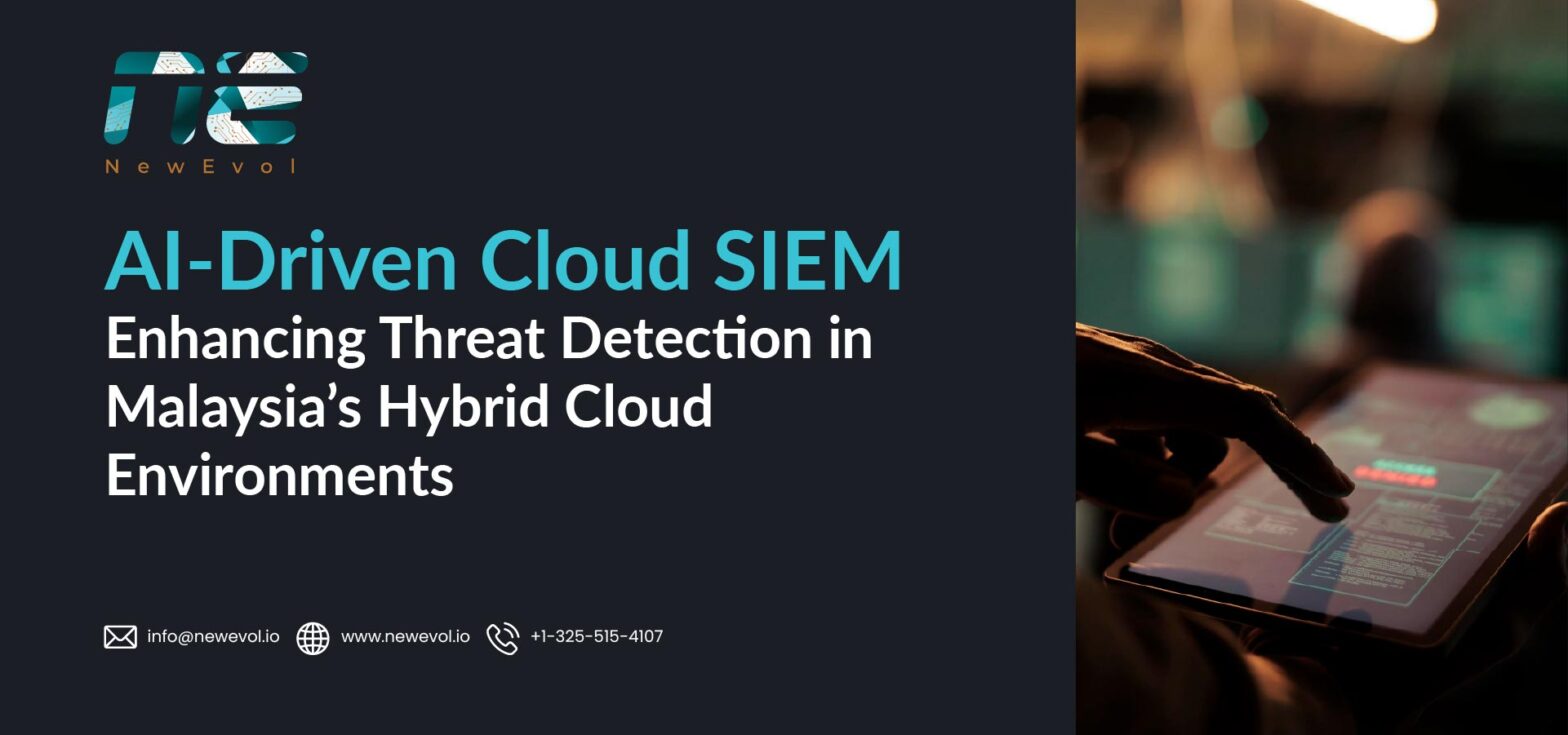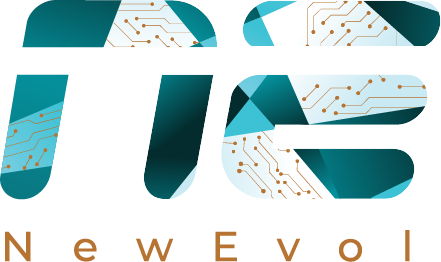AI-Driven Cloud SIEM for Malaysia’s Hybrid Cloud Security

Hybrid cloud is no longer a buzzword in Malaysia. Banks, retailers, even government-linked companies are running part of their workloads on Azure or AWS, while still keeping some systems on-premise. This mix gives flexibility, but it also creates blind spots for security teams.
The old-school SIEM tools weren’t built for this world. They struggle with cloud logs, scale, and the sheer speed of modern attacks. That’s where AI-driven Cloud SIEM comes in — using machine learning to cut through the noise, spot hidden threats, and reduce false alarms.
For Malaysian businesses, this isn’t about chasing shiny tech. It’s about staying compliant with local regulations, protecting customer trust, and making sure your hybrid cloud environment doesn’t become an open door for attackers.
Quick primer: What is an AI-driven Cloud SIEM?
Think of a normal SIEM (Security Information and Event Management) as a giant log collector. It pulls data from your servers, firewalls, and apps, then alerts you if something looks suspicious. Useful, but often noisy and slow.
Now add cloud-native design plus AI on top. That’s an AI-driven Cloud SIEM. It doesn’t just store logs — it learns from them. Using machine learning, it spots unusual patterns, connects dots across different systems, and flags real threats faster than a human analyst could.
For Malaysian companies running on hybrid setups (part on-prem, part cloud), this means one platform can watch both worlds. And instead of drowning in alerts, your team gets fewer, smarter signals they can actually act on.
Why Malaysia needs AI-driven Cloud SIEM now
Malaysia is in the middle of a big cloud shift. Banks are rolling out digital-first services, manufacturers are moving workloads into multi-cloud, and even government-linked firms are adopting hybrid setups. This means more data, more connections, and unfortunately, more gaps for attackers to slip through.
At the same time, regulators are tightening the rules. Frameworks like BNM’s RMiT, the Cyber Security Act 2024, and ongoing PDPA amendments demand stronger monitoring and faster reporting. Traditional SIEM tools just weren’t designed to handle today’s cloud scale or compliance pressures.
That’s why AI-driven Cloud SIEM isn’t a “nice-to-have” anymore — it’s the next step. It gives Malaysian businesses real-time visibility across on-prem and cloud, cuts down the noise from false alerts, and helps meet regulator expectations without burning out security teams.
Core benefits
So, what’s the real difference when you add AI into the SIEM mix? A few things stand out:
- Faster threat detection – AI builds baselines of “normal” activity and spots unusual behavior right away, even if the attack is brand new.
- Less noise, fewer false alarms – Instead of drowning your team in alerts, AI filters and correlates signals so you only see what matters.
- Smarter investigations – AI connects the dots across logs, users, and systems, giving analysts context they’d normally spend hours piecing together.
- Automation built-in – When paired with playbooks, it can take quick actions like blocking suspicious logins or isolating infected endpoints.
- Scales with your cloud – As log volumes spike in hybrid environments, AI helps keep performance smooth without blowing up costs.
How AI-driven SIEM fits hybrid cloud architectures
Hybrid cloud means your IT is spread out — a bit on-prem, a bit in Azure or AWS, maybe even SaaS apps like Office 365. For security teams, that’s a headache. Logs are scattered, formats don’t match, and blind spots appear everywhere.
An AI automated Cloud SIEM sits right in the middle of this setup. It pulls data from on-prem servers, cloud workloads, SaaS platforms, and even OT/IoT devices. Once all those logs land in one place, AI kicks in:
- Normalizes the data so everything “speaks the same language.”
- Enriches events with threat intelligence and user context.
- Correlates across sources to uncover multi-step attacks.
- Flags anomalies that a traditional SIEM would miss.
For Malaysian businesses, this is key. A bank might have its core system still on-prem, but digital banking apps running in the cloud. Manufacturers may connect OT equipment to cloud dashboards. Without a cloud-ready SIEM that uses AI, those cross-environment attacks slip under the radar.
With AI-driven SIEM, you get one dashboard, one set of alerts, and one way to prove compliance — no matter where your workloads live.
NewEvol strengths: why it works for Malaysian hybrid clouds
Not every SIEM is built for hybrid-cloud realities, but NewEvol was designed with that challenge in mind. A few things stand out:
- All-in-one platform – It combines SIEM, a data lake, advanced analytics, and SOAR in one solution. That means fewer tools to integrate and fewer gaps for attackers to exploit.
- Flexible deployment – Whether your systems sit on-prem, in Azure, AWS, or a mix, NewEvol plugs in smoothly. No messy rip-and-replace.
- Noise reduction with ML – The platform learns from your own data and filters out false positives, so Malaysian SOC teams don’t waste hours chasing harmless alerts.
- Compliance-ready reporting – Built-in dashboards make it easier to align with PDPA, BNM RMiT, and upcoming Cyber Security Act requirements.
- Partnership-driven – Through Sattrix, Malaysian companies also get managed support — local expertise plus a global-grade platform.
Practical use cases
AI-driven Cloud SIEM isn’t theory — here’s how it plays out for real Malaysian businesses:
- Banking & Finance – A digital bank sees a sudden spike in failed logins on its mobile app. Instead of raising thousands of false alerts, the SIEM uses behavioral analytics to spot the few logins that actually look like credential stuffing. The fraud team gets the alert in minutes, not hours.
- Manufacturing – A factory has sensors and OT systems linked to a cloud dashboard. Attackers try moving from an old on-prem server into the cloud. The SIEM correlates logs across both environments, catching the lateral movement before production is disrupted.
- Healthcare – A hospital’s hybrid setup stores patient data partly on-prem and partly in cloud apps. When unusual access attempts come from an overseas IP, the SIEM flags it immediately and auto-triggers a block — protecting sensitive records.
- Retail & E-commerce – During a flash sale, a retailer’s API is bombarded with suspicious traffic. The SIEM’s AI models quickly separate normal high-traffic from malicious bots, stopping fraud before it hits the checkout system.
Implementation checklist for Malaysian teams
Rolling out an AI-driven Cloud SIEM doesn’t have to be overwhelming. Here’s a simple roadmap Malaysian IT and security teams can follow:
- Decide data residency – Clarify where logs will be stored (local data center, cloud region in Malaysia, or overseas) to stay aligned with PDPA and sector rules.
- Inventory log sources – List all on-prem servers, cloud workloads (Azure, AWS, GCP), SaaS apps, and any OT/IoT devices that should feed into the SIEM.
- Integrate threat intel – Add both global feeds and local context (e.g., MyCERT advisories) so alerts are relevant to Malaysian threats.
- Tune AI models – Run a baseline period, then fine-tune thresholds so the SIEM reflects your environment, not generic patterns.
- Automate playbooks – Define response actions for common incidents (suspicious login, malware detection, API abuse).
- Run tabletop drills – Test the system with your SOC or MSSP partner to see how alerts flow, how fast incidents are handled, and where bottlenecks remain.
- Document for compliance – Set up reporting templates that match regulator expectations (BNM, Cyber Security Act, PDPA).
KPIs to measure success
Rolling out an AI-driven Cloud SIEM is only half the story — you need proof it’s working. These KPIs give a real-world measure of success:
- Mean Time to Detect (MTTD) – How quickly the SIEM spots suspicious activity. (Goal: hours → minutes)
- Mean Time to Respond (MTTR) – How fast incidents are contained once detected.
- False Positive Rate – Percentage of alerts that turn out to be noise. Lower is better.
- Cloud Coverage – % of cloud workloads and SaaS apps feeding logs into the SIEM.
- Automation Rate – How many incidents are automatically enriched or resolved via playbooks.
- Compliance Reporting Time – Hours saved in preparing regulator-ready evidence (BNM, PDPA, Cyber Security Act).
End Note
Hybrid cloud is now the backbone of digital business in Malaysia — but with it comes a wider attack surface and stricter compliance rules. Old SIEM tools just can’t keep up.
That’s where AI-driven Cloud SIEM changes the game. It cuts through noise, connects dots across on-prem and cloud, and gives your team faster, clearer insights. For Malaysian companies, the payoff is simple: stronger security, smoother audits, and more confident growth in the cloud.
With NewEvol, backed by Sattrix’s managed expertise, you don’t just get a tool. You get a platform and a partner built for Malaysia’s hybrid reality.
FAQs
1. What is AI-powered threat detection in cloud environments?
It’s using machine learning to spot unusual behavior in cloud systems, helping detect attacks faster and with fewer false alarms.
2. Which AI technique is used for threat detection in cybersecurity?
Common ones include anomaly detection, behavioral analytics, and pattern recognition through machine learning models.
3. What is AI SIEM?
An AI SIEM is a cloud-native security platform that combines traditional SIEM log management with AI/ML to improve detection and automate response.
4. Which 3 AI-driven cybersecurity capabilities significantly enhance threat detection and response?
(1) Behavioral analytics, (2) Automated correlation of events across systems, and (3) SOAR playbooks for faster response.

